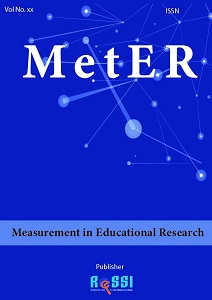Assessing the dimensionality of digital literacy: A bifactor analysis of pre-service informatics teachers
DOI:
https://doi.org/10.33292/meter.v5i2.482Abstract
This study aims to develop and evaluate a digital literacy instrument for students in Informatics Engineering Education using a bifactor model. The instrument is designed around three primary dimensions: Digital Professional Competency, Integration of Technology in Teaching, and Collaboration and Digital Media Literacy. The results indicate that the general factor (G) makes a dominant contribution, accounting for 85.87% of the total explained variance, while the contributions of the specific factors were comparatively low: 5.30% for Digital Professional Competency, 2.03% for Integration of Technology in Teaching, and 6.81% for Collaboration and Digital Media Literacy. This finding suggests that the instrument is more effective at measuring digital literacy as a holistic competency rather than its specific dimensions. However, the low contribution from the specific dimensions highlights the need to revise certain items to enhance their measurement sensitivity and accuracy. This study provides a significant contribution to the development of valid and reliable digital literacy instruments capable of supporting evidence-based decision-making in technology-enhanced education.
Published
How to Cite
Issue
Section
Citation Check
License
Copyright (c) 2025 I Nyoman Indhi Wiradika, I Nengah Edi Budiarta

This work is licensed under a Creative Commons Attribution-ShareAlike 4.0 International License.







